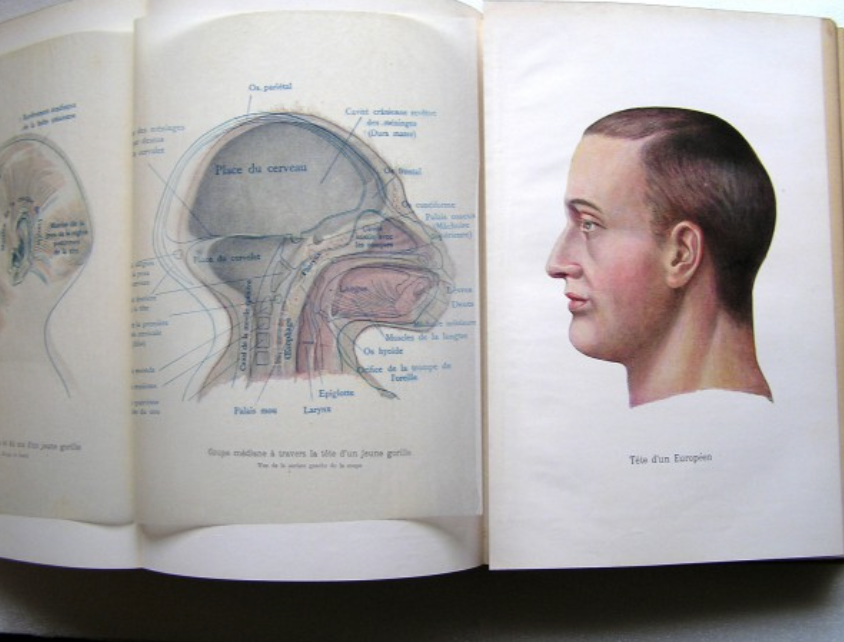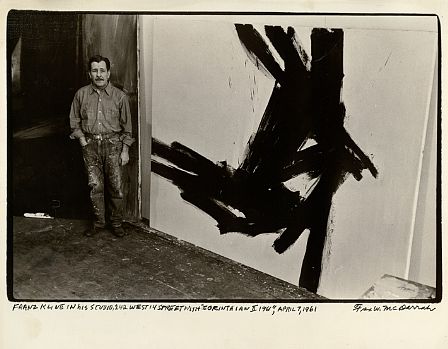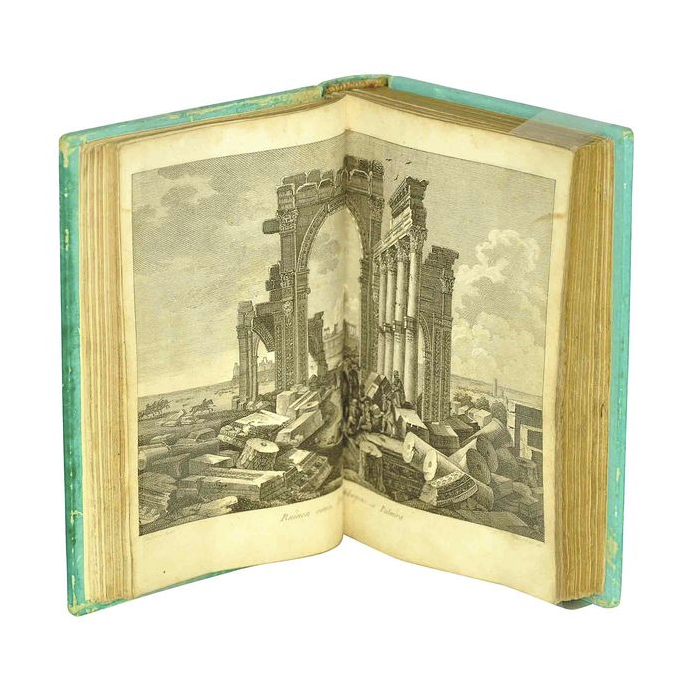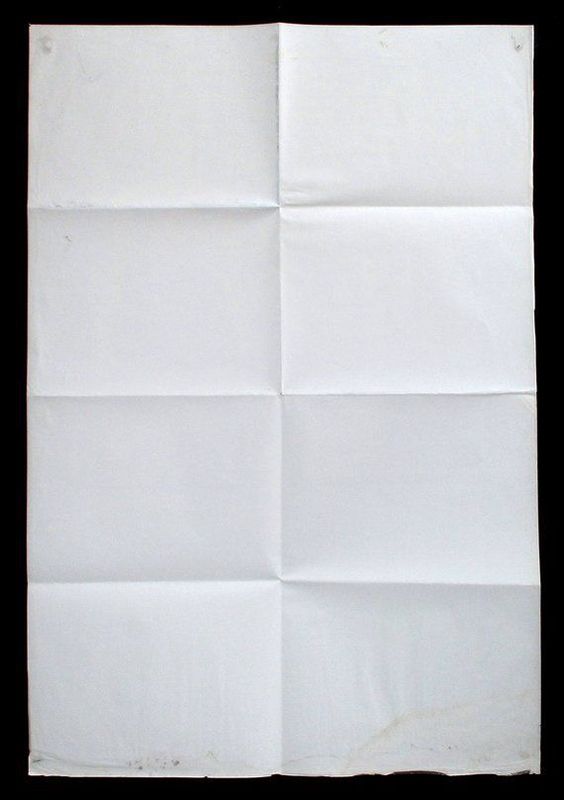INTENT
Argue that the force behind life is the force behind human creation. The freedom of the artist is what propells this process and its dynamics.
Back this up. Writings about creativity and its combinatory abilities. The fact that something cannot be described in words, or concepts. That complexity, of every individual eye and its perception. How art deals in this force. That is its business and appeal. Its core, its language.
I strive to make my understanding of this force visible. An attempt to illustrate creative enlightenment while I allow/force it to happen.
In this process I will attempt to study and embrace my past. Making connections retrospectively where I could not see them at the time. Attributing active thought to areas so far intuitive. Active thought being reading, writing and making.
Through this process I will give my self making assignments. Ways to illustrate my thinking or flux at the time. The assignments well described and intentional, the making free and interpretational.
Combining media and disciplines to enhance and catalize this flux process and explore possibilities in practice. Applying a matrix to crossbreed ideas.
A multidisciplinary Theo Jansen evolutionary approach in warped space time.
Machines for dynamic, creativity. Morphogenesis. Accepting that words inadequately describe the processes before and after except for describing the process. Never attempting to explain by which you would defeat it’s purpose. If it doesnt speak in words, dont make it.
Applying my thinking to the whole spectrum of dimension. Zooming in and out simultaneously, observing the physical and the metaphysical.
NO FUX
The intent is to structure as much as I can, this creative process that has so far happened automatically behind the scenes. Bring it to the front to look at it, take it apart and put it back together again.
I hope to get more clarity on what I have done so far and to formulate some important questions. The answers might be less important. Equally I feel the need to face my own multidisciplinarity. My distractions and focus. To accept it, understand it and work from it.
CREATIVITY
Ever since my 20’s I’ve lived with a hunch of how creative power might work and through recent readings those feelings have been reinforced with accounts from others.
Visiting a lecture by Rupert Sheldrake at the UVA and learning about his information field theory called morphic fields. A belief that there are unmeasurable factors at play connecting ideas and things through yet undefined fields.
SHELDRAKE link

“Causal entities which are somehow more than the sum of the parts of the developing systems, and which determine the goals of the processes of development.”
“when so little is actually understood, there is an open possibility that at least some of the phenomena of life depends on laws or factors as yet unrecognized by the physical sciences." -Rupert Sheldrake
Attempting to get a grasp on morphogenetic fields is an example of the objectifying process we have all learned to use to categorize reality and to function as we do. Clearly, this is where most skepticism to Sheldrake's theory of formative causation arises. The morphogenetic fields are undetectable and undefinable in mechanistic terms, yet the evidence of morphogenetic fields is within our own form.
Morphogenetic Fields and Dynamic Quality
This makes morphogenetic fields impossible to objectify and quantify. And so science, which insists on 'objective' viewpoints, is at a loss to explain anything that is un-objectifiable and so denies existence to it. When we look at the problem from the Quality is everything point of view of the Metaphysics of Quality, the quantitative problems of mechanistic classical thinking begin to disappear.
Dynamic Quality is itself undefinable and undetectable, for as soon as Dynamic Quality is enclosed and named, it becomes 'something' else and not Dynamic Quality. The evidence of Dynamic Quality is only contained in its passing.
"In the most general terms, form and energy bear an inverse relationship to each other; energy is the principle of change, but a form or structure can only exist as long as it has a certain stability and resistance to change."
This is very similar to Pirsig's static latching. Without a certain stability to allow static latches to form, Dynamic Quality would be in a state of total Freedom, what we perceive as chaos. In place of form and energy that we can perceive, we must conceive instead of an unconceptual Energy that exists as Dynamic Quality in the Metaphysics of Quality.
Contrary to the philosophy of materialism, the conscious self can be admitted to have reality which is not merely a derivative from matter
*
This brought him discredit and scrutiny as a scientist. As an artist, this belief lies paralel to our process of creation. To not understand and admit that something can come out of nothing or without explanation. To then offer possible explanations or theories is artistic expression. To be an artist is to believe religiously in this abstract unknown layer of possibility intertwined with everything around us. This is our consolation, our hope and solace.
from quantum forces through inorganic forces and biological patterns and social patterns to the intellectual patterns that perceive the quantum forces.
INDETERMINATE ABSOLUTE
Taking a step back from producing makes the space available for new combinations and concoctions that might arise from studying my own sources of inspiration and thoughts that have so far been mostly subcoscious, intuitive and unorganised. This is an attempt to bring the whole to a maliable, visual and adaptable tool level of idea representation. Bad sentence.
An attept to connect the dots while looking backwards and forward. Making new connections between earlier thoughts and findings.
Open up the path between inspiration and production in a way that feels more organized and planned strategically while leaving opportunity for combinatory play/creativity.
ACTIVE THINKING
It is important to treat this process as work. Take it seriously like I have not done before.The same goes for previous thinking and collecting I have done and will keep doing.
What lies central to all this is the marriage between randomness and structure. Both are necessary and the combination of the two in unespected ways is the goal.
To quote John Cage:
“When I am not working I sometimes think I know something, but when I am working, it is quite clear that I know nothing.“
When carrying a tray of glasses, best not to look at the tray but to trust your automatic muscle control.
THE STORY
The story comes first but is really reconstructed from past musings. It lays the stones for further advancement and therefore necessary.
Q’s
How to be an artist?How to trust your intuition?
What is your job/responsibilty?
What are you looking at?
“And that is the desire to matter in the world, to be seen, to know that our existence makes a difference, that our creative and intellectual labor is of value to the world.“
CAGE: Instead of representing my control, they represent questions I’ve asked and the answers that have been given by means of chance operations. I’ve merely changed my responsibility from making choices to asking questions. It’s not easy to ask questions.
Larson adds:
Chance operations offered Cage a chance to change his own mind without intellectualizing but, rather, by immersing himself in experiences without judgment and letting them teach him. Indeed, chance and change went hand-in-hand for him:
The classic questions of where we are as humans.
L’univers et L’humanite


The everything approach.
“The idea that in order for us to truly create and contribute to the world, we have to be able to connect countless dots, to cross-pollinate ideas from a wealth of disciplines, to combine and recombine these pieces and build new castles.
Include anything on any scale as subject or inspiration. Connect them with intuition.”
WHAT IS RENNAISCANCE?
Universal man.
ART & FEAR
In the ideal — that is to say, real — artist, fears not only continue to exist, they exist side by side with the desires that complement them, perhaps drive them, certainly feed them. Naive passion, which promotes work done in ignorance of obstacles, becomes — with courage — informed passion, which promotes work done in full acceptance of those obstacles.
That is how innovation happens. Chance favors the connected mind.” ~ Steven Johnson
A view of the world I live in and have experienced so far. The questions I ask myself as a human and as an artist. What it means to see that as my function in society. I have to reshape that idea for myself. Find a sense of purpose within my profession.
Connecting my fascinations and inspirations
A demonstration of fascination with the workings of things.
Finding a purpose:
What would yo do if money played no role?
Paul Graham:
Prestige is the enemy of passion.
Prestige is the opinion of the rest of the world.
Prestige is just fossilized inspiration
“Find something more important than you are,” Dan Dennett
What I suspect, is that the creative process itself will be part subject of my output.
MAKING
QUALITY
(Robert Pirsig & His Metaphysics of Quality)
So now in the West we have objectivity, reason, logic, and dialectic on the one hand; and subjectivity, emotion, imagination, intuition, and rhetoric on the other. The former terms suggest scientific respectability, while the latter are often assumed to be artistic terms, having little place in science or rationality. It is this Platonic conception of rationality that Pirsig sought to challenge by reconciling the spiritual (for example, Zen), artistic (for example, art) and scientific (for example, motorcycle maintenance) realms within the unifying paradigm of the Metaphysics of Quality.
The Metaphysics of Quality varies from this by saying that the values of art and morality and even religious mysticism are verifiable and that in the past have been excluded for metaphysical reasons, not empirical reasons. They have been excluded because of the metaphysical assumption that all the universe is composed of subjects and objects and anything that can’t be classified as a subject or an object isn’t real. There is no empirical evidence for this assumption at all.” (p.121)
By ‘static quality’, Pirsig doesn’t refer to something that lacks movement in the Newtonian sense of ‘static’ (he agreed with me that the word ‘stable’ would have been better because of this ambiguity), but refers to any repeated arrangement – that is, to any pattern that appears long enough to be noticed within the flux of immediate experience – whether inorganic (for example, chemicals, forces), organic (plants, animals), social (cities, ant nests), or intellectual (thoughts, ideas).
“Socrates is seeking knowledge; or perhaps it is better to say that he is seeking wisdom, in that the values in question are not just an intellectual matter, but are values to be lived. In Socrates’ eyes, a man who claims to know what bravery is but does not act bravely would thereby prove that he does not know what bravery is” (my emphasis). That is, it is only lived values that can give you wisdom.
Apply this to trying everything and always reinventing the wheel.
ON ART
ART AND WHAT WORDS CAN”T CAPTURE. ALSO WHY MUSIC JUST WORKS BETTER.ARTSPEAK
‘devouring the menu instead of the meal’
incubation
WINNERS DONT THINK
Met dank aan Niek Mager.My Childhood dream and why I cannot live it?

WONDER:
MORPHOGENESIS:
morphogenesis can be defined as the 'coming-into-being' of characteristic and specific formcombinatorial creativity and the cross-pollination of disciplines
In 1952, iconic designer Alvin Lustig wrote in an essay:
I have found that all positions men take in their beliefs are profoundly influenced by thousands of small, often imperceptible experiences that slowly accumulate to form a sum total of choices and decisions.
In 1964, neuropsychologist Roger Sperry drew an analogy between neurons and ideas:
Ideas cause ideas and help evolve new ideas. They interact with each other and with other mental forces in the same brain, in neighboring brains, and thanks to global communication, in far distant, foreign brains.
In 1970, French molecular biologist Jacques Monod proposed what he called the “abstract kingdom” — a conceptual place analogous to the biosphere, populated by ideas that propagate much like organisms do in the natural world. Monod wrote:
Ideas have retained some of the properties of organisms. Like them, they tend to perpetuate their structure and to breed; they too can fuse, recombine, segregate their content.
Here’s Kevin Kelly, futurist and Wired founder and brilliant, brilliant man, pondering the future of the book:
Over the next century, scholars and fans, aided by computational algorithms, will knit together the books of the world into a single networked literature. A reader will be able to generate a social graph of an idea, or a timeline of a concept, or a networked map of influence for any notion in the library. We’ll come to understand that no work, no idea, stands alone, but that all good, true and beautiful things are networks, ecosystems of intertwingled parts, related entities and similar works.
Descartes: “wonderment is the first passion of all,”
“There is, in sanest hours, a consciousness, a thought that rises, independent, lifted out from all else, calm, like the stars, shining eternal,” Walt Whitman
Einstein: The Intuitive Mind Is a Sacred Gift and the Rational Mind I
CAGE:
The world, the real is not an object. It is a process.
THIS - TO WORK WITH IMAGERY OF THIS PROCESS, DESCRIBING, USING, FOLDING AND BENDING THE CREATIVE PROCESS ITSELF.
ABOUT FAVELA PAINTING.
R. Krulwich
In every career, your job is to make and tell stories, of course. You will build a body of work, but you will also build a body of affection, with the people you’ve helped who’ve helped you back. This is the era of Friends in Low Places. The ones you meet now, who will notice you, challenge you, work with you, and watch your back. Maybe they will be your strength.
Jim Coudal, one of my big creative and curatorial heroes, once said:
Our number one value isn’t in any of the skills we have. It’s that we’re essentially curious.
But curiosity without direction can be a taxing and ultimately unproductive endeavor. Choice is how we tame and channel and direct our curiosity
So if information discovery plays such a central role in how we fuel our creativity and thus in our creative output, then information discovery is a form of creative labor in and of itself.
So if information discovery plays such a central role in how we fuel our creativity and thus in our creative output, then information discovery is a form of creative labor in and of itself. And yet our current code of ethics for respecting and crediting this kind of labor is completely inadequate. We have clearly defined systems for what’s right or wrong in terms of crediting creative products across text, image, video, and different media, from image rights to literary citations. But we don’t have the same ethical principles for sources of discovery. And yet, in a culture of exponentially increasing overload, it’s through these nodes in the information ecosystem, these human sensemakers, human synapses if you will, that this very text or image or video finds its way into our mental pool of resources.

Saul Bellow’s superb Nobel Prize acceptance speech from the same era: “Only art penetrates… the seeming realities of this world. There is another reality, the genuine one, which we lose sight of. This other reality is always sending us hints, which without art, we can’t receive.
In 1976, Richard Dawkins, in his iconic book The Selfish Gene, which by the way I highly recommend, coined the word “meme” for a similar concept:
Examples of memes are tunes, ideas, catch-phrases, clothes fashions, ways of making pots or of building arches. Just as genes propagate themselves in the gene pool by leaping from body to body via sperms or eggs, so memes propagate themselves in the meme pool by leaping from brain to brain via a process which, in the broad sense, can be called imitation.
Chimera
Grotesque monster. Unreal creature of the imagination. A vain or idle fancy:.A thing which is hoped for but is illusory or impossible to achieve.
Synonyms:
non-entity , dream, fantasy, vision, delusion, phantasm, mirage, idea unreality, pipe dream, fantasm, conceit, fiction, concoction, fabrication, nonentity, utopia, ignis fatuus, fancy, visualisation, fable, invention, daymare
The RASHOMON effect.
Marshall McLuhan said we navigate our way into the future like someone driving who uses only the rear-view mirror to tell them where they’re going.
“Creativity is like chasing chickens,” Christoph Niemann
Archeology of:
Recontructing puzzling of clues
Albert Einstein, who termed it “combinatory play.”
(A) The words or the language, as they are written or spoken, do not seem to play any role in my mechanism of thought. The psychical entities which seem to serve as elements in thought are certain signs and more or less clear images which can be “voluntarily” reproduced and combined.
There is, of course, a certain connection between those elements and relevant logical concepts. It is also clear that the desire to arrive finally at logically connected concepts is the emotional basis of this rather vague play with the above-mentioned elements. But taken from a psychological viewpoint, this combinatory play seems to be the essential feature in productive thought — before there is any connection with logical construction in words or other kinds of signs which can be communicated to others.
(B) The above-mentioned elements are, in my case, of visual and some of muscular type. Conventional words or other signs have to be sought for laboriously only in a secondary stage, when the mentioned associative play is sufficiently established and can be reproduced at will.
(C) According to what has been said, the play with the mentioned elements is aimed to be analogous to certain logical connections one is searching for.
(D) Visual and motor. In a stage when words intervene at all, they are, in my case, purely auditive, but they interfere only in a secondary stage, as already mentioned.
(E) It seems to me that what you call full consciousness is a limit case which can never be fully accomplished. This seems to me connected with the fact called the narrowness of consciousness (Enge des Bewusstseins).

MEMORY


Borges: “we are our memory… that chimerical museum of shifting shapes, that pile of broken mirrors.”
Antonio Damasio: Sometimes we use our minds not to discover facts, but to hide them. We use part of the mind as a screen to prevent another part of it from sensing what goes on elsewhere. The screening is not necessarily intentional — we are not deliberate obfuscators all of the time — but deliberate or not, the screen does hide.
LINEAGE OF WHAT PEOPLE MAKE
HOW THEY DECORATE
CAGE: Everybody has a song which is no song at all: it is a process of singing, and when you sing, you are where you are. All I know about method is that when I am not working I sometimes think I know something, but when I am working, it is quite clear that I know nothing.
S. Jobs.
Again, you can’t connect the dots looking forward; you can only connect them looking backwards. So you have to trust that the dots will somehow connect in your future. You have to trust in something — your gut, destiny, life, karma, whatever.
